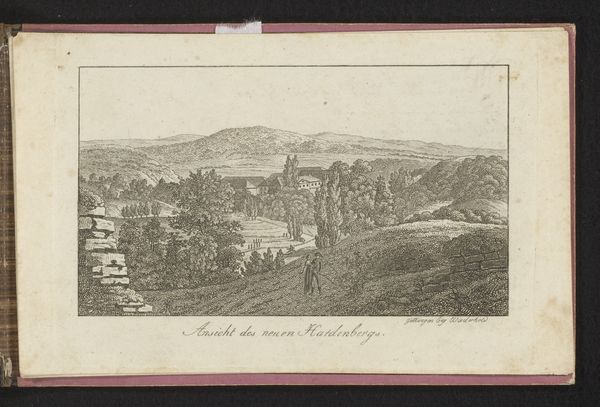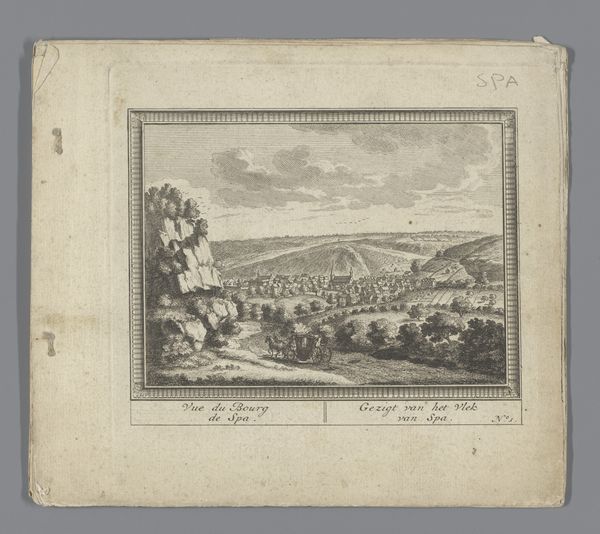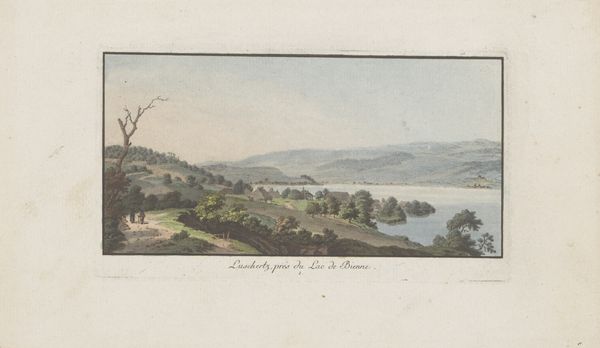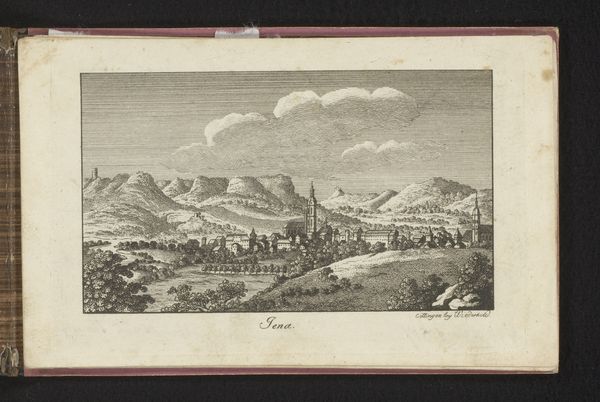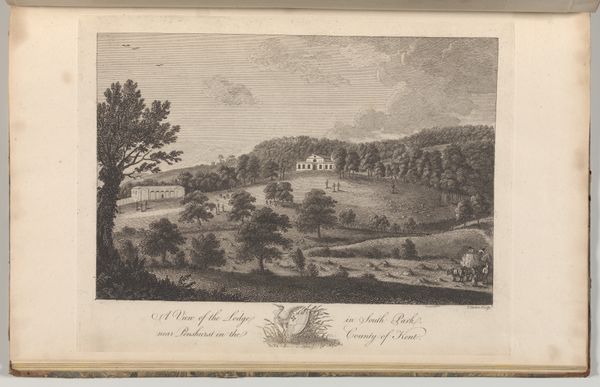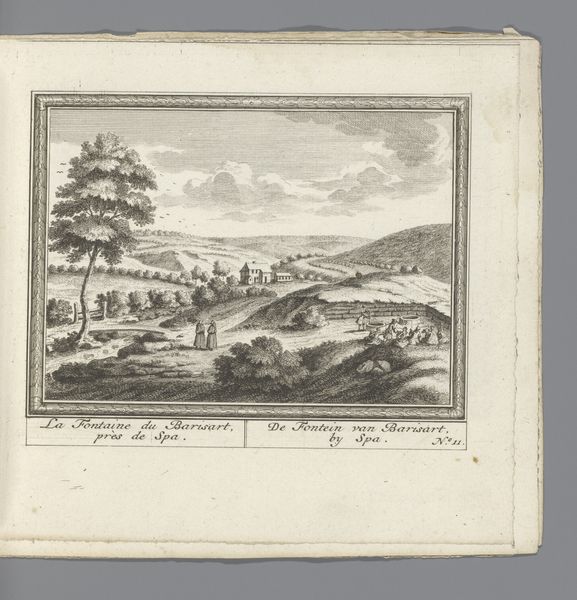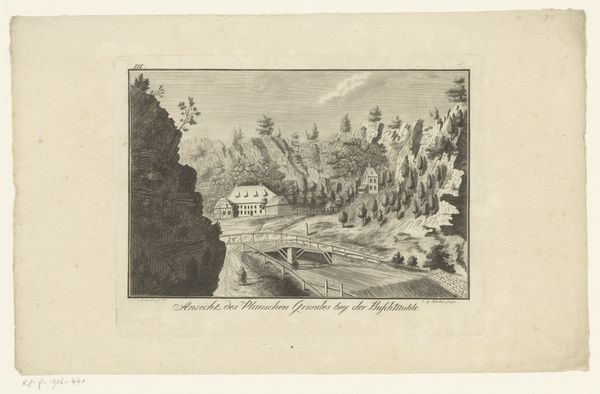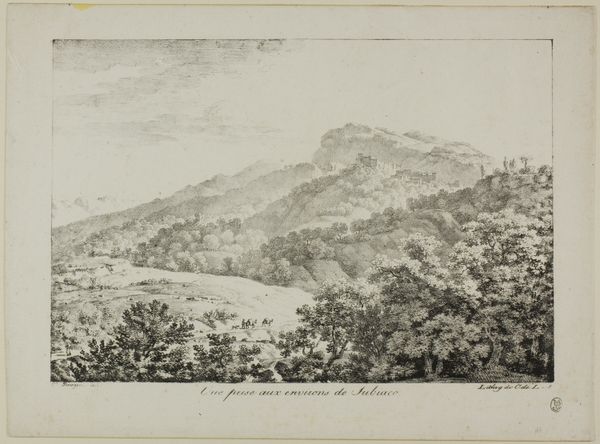
print, engraving
# print
#
landscape
#
coloured pencil
#
romanticism
#
engraving
Dimensions: height 105 mm, width 171 mm
Copyright: Rijks Museum: Open Domain
Editor: Here we have a print titled "Gezicht op het Siebertal in Harz," likely created sometime between 1770 and 1818. It seems to be an engraving, depicting a landscape scene. I'm struck by the way the dense trees contrast with the open space of the valley. What catches your eye? Curator: As a materialist, I’m immediately drawn to the engraving process itself. Consider the labor involved: the skilled artisan meticulously cutting into a metal plate, transferring an image intended for mass production. The subtle gradations of light and shadow are achieved through a mastery of line weight and density – techniques reflecting a sophisticated understanding of material possibilities. What social classes did these artisans belong to, and how did the market for prints shape their labor? Editor: That's a perspective I hadn't fully considered. I was focused on the "Romanticism" tag and seeing nature, but now I’m thinking about the social and economic forces that made its production possible. Do you think the availability of this kind of print democratized access to landscapes that people might otherwise never see? Curator: Precisely. We need to look at printmaking as an industry; consider the rise of the merchant class and a new appreciation for landscape views – a commodification of the natural world for bourgeois consumption. It suggests a desire for ownership, or at least a visual possession, of these scenic vistas. What specific evidence within the image supports such analysis? Editor: Well, the organized, almost cultivated look of the forest on the one side…It seems "tamed", maybe? And then there's the inclusion of what looks like a building or small farm. It's nature, but nature with signs of human intervention, ownership. I see what you mean. I have to say I've certainly changed my perspective; thinking less about the beauty, and more about the work, economy, and consumerism, I can appreciate how seeing Romanticism through materiality impacts our views. Curator: And understanding the methods of production is how we unravel not just the 'how,' but the 'why' of artistic choices and its socio-economic ripples across society.
Comments
No comments
Be the first to comment and join the conversation on the ultimate creative platform.
